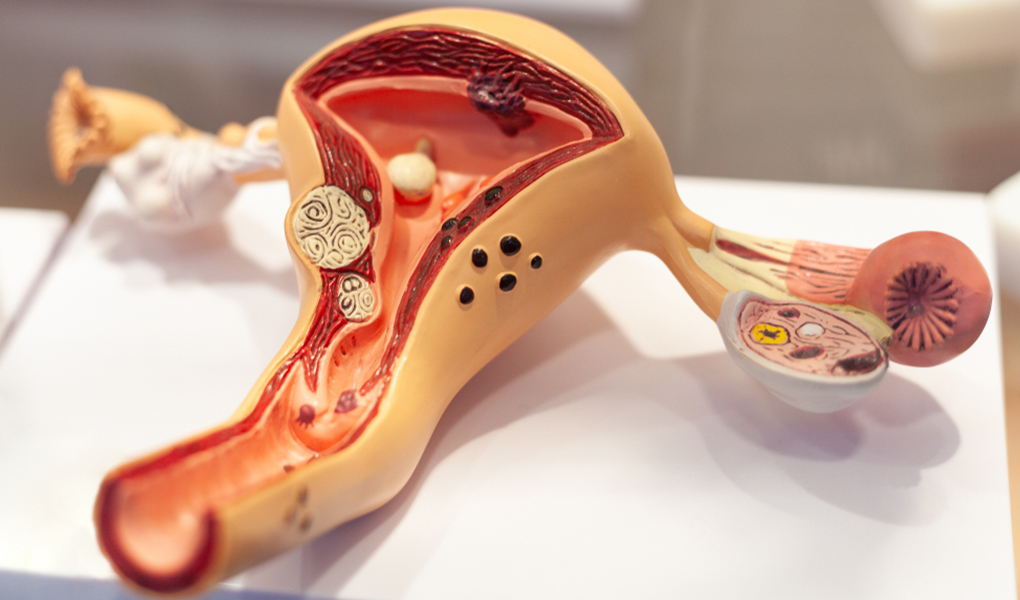Cervical cancer is 2nd most common cancer type seen in women every year 500.000 new cases occur in the world. 95% of the cervical cancers are caused by HPV virus.
What is Cervical?
The cervical is, where the uterus opens into the vagina. A strong muscle, the cervical expands by opening at birth.
What is Cervical Cancer?
Cervical cancer is a type of cancer that occurs in cervical cells. Various types of human papilloma virus (HPV), a sexually transmitted infection, cause cervical cancer. When exposed to HPV, the body’s immune system can fight against the virus to prevent damage. However, in a small percentage of people, the virus does not disappear and contributes to the process that causes some cervical cells to become cancer cells. You can reduce your risk of cervical cancer by having screening tests and a vaccine that protects against HPV infection. However, the vaccine does not completely reduce the risk of cervical cancer to zero because it only acts against certain types of HPV.
Symptoms of Cervical Cancer?
“What are the symptoms of cervical cancer?” is amongst the most asked questions. However, signs or symptoms of early cervical cancer may not be recognized by the individual. Symptoms of further cervical cancer can be listed as follows:
- Vaginal bleeding after sexual intercourse, between menstrual periods or after menopause
- A watery, bloody vaginal discharge with a heavy and foul odour
- Pelvic pain or pain during sexual intercourse
Symptoms of cervical cancer may not cause skin formations such as warts. Warts are caused by other types of HPV. However, if genital wart is detected, the patient should be closely monitored.
Although the early symptoms of cervical cancer are unnoticed by the person, it can be determined in screening tests such as smear test and doctor examination.
Smear Test for Cervical Cancer
“What is Smear and Pap Smear Tests?” is another frequently asked question. Pap smear is a painless test. Patient lays down as in gynaecological examination position, with a tool that looks like a brush sample is taken. This sample is then sent to the laboratory for further analyses. Pathologists examine the cells under microscope and determine whether if the cells are in normal structure. Smear test is not applied solely for diagnosing cervical cancer. Pap smear test is also used on determination of presence of precancerous cells and tissues. The Pap smear test is a screening test that should be routinely performed in women over 21 years of age. The smear test can detect the presence of cervical cancer early and save lives. Sexual intercourse should not be entered within 48 hours before the smear test, vagina should not be washed, vaginal way suppositories or cream should not be taken.
Causes of Cervical Cancer
Cervical cancer starts when changes (mutations) occur in the DNA of healthy cells in the cervical. A cell’s DNA contains instructions that tell a cell what to do.
Healthy cells grow and multiply over a period and die after a while. Cancer-causing mutations cause cells to divide out of control. Accumulated abnormal cells form a mass (tumour). Cancer cells invade nearby tissues and can be separated from a tumour to spread (metastasis) anywhere in the body.
HPV has a major role in cervical cancer. HPV is a very common virus, but most people with the virus may not get cancer. In addition to the presence of the virus, environmental factors can also play a role in whether cervical cancer develops.
Types of Cervical Cancer
Type of cervical cancer helps to determine prognosis and treatment.
The main types of cervical cancer:
- Squamous cell carcinoma: This type of cervical cancer begins in thin, flat cells (squamous cells) that cover the outer part of the cervix and proceed to the vagina. Most cervical cancer is squamous cell carcinoma.
- Adenocarcinoma: This type of cervical cancer, cervical canal in the form of column-shaped glandular cells start.
Sometimes cervical cancer, both cell types are encountered. Very rarely, cancer occurs in other cells in the cervix.
Treatment of Cervical Cancer
Treatment of cervical cancer depends on several factors, including the stage of the cancer, other health problems you may have, and your preferences. Surgery, radiation, chemotherapy, or a combination of the three may be used.
Surgical intervention: Early cervical cancer is typically treated surgically. Which operation is best for you depends on the size, stage of your cancer and whether you want to become pregnant in the future. Some of the surgical options can be summarized as follows:
Only cancer-removing surgeries: For a very small cervical cancer, it may be possible to completely remove the cancer with a cone biopsy. This procedure involves cutting a cone-shaped cervix piece of tissue but leaving the rest of the cervix intact. This option is suitable for those who wish to become pregnant in the future.
Cervical removal surgery (trachelectomy): Early cervical cancer can be treated with a radical trachelectomy procedure that destroys the cervix and surrounding tissues. The uterus remains after this procedure, so it may be possible to become pregnant if you wish.
Surgery for removal of the cervix and uterus (hysterectomy): Most early stage cervical cancers are treated with a radical hysterectomy operation, including removal of the cervix, uterus, part of the vagina, and nearby lymph nodes. A hysterectomy can cure early cervical cancer and prevent recurrence. However, removing the uterus makes it impossible to become pregnant.
Minimally invasive hysterectomy, which involves several small incisions in the abdomen instead of a large incision, may be an option for early cervical cancer. People who have undergone minimally invasive surgery recover faster and remain less hospitalized. However, some studies show that minimally invasive hysterectomy may be less effective than conventional hysterectomy.
Radiation: Radiation therapy is often combined with chemotherapy as the primary treatment of locally advanced cervical cancers. It can also be used after surgery in case of increased risk of cancer return.
Radiation therapy can be given in several ways:
Externally, by directing radiation to the affected area of the body (external radiation treatment)
Internally, by placing a device full of radioactive material (brachytherapy) in your vagina, usually for only a few minutes
Both externally and internally
If you have not yet had menopause, radiation therapy can cause menopause.
Chemotherapy:
Chemotherapy is a drug therapy that uses chemicals to kill cancer cells. It can be administered intravenously or taken in pill form. Sometimes both methods are used. For locally advanced cervical cancer, low-dose chemotherapy is often combined with radiation therapy because chemotherapy can increase the effects of radiation. Higher doses of chemotherapy may be recommended to help control very advanced cancer symptoms.
Target Based Treatment:
Targeted drug therapies focus on specific weaknesses found in cancer cells with some mutations. Using these weaknesses, targeted therapies can cause cancer cells to die. Targeted drug therapy is often combined with chemotherapy. It may also be an option for advanced cervical cancer.
Immunotherapy:
Immunotherapy is a medication that helps your immune system fight cancer. Your body’s immune system, which fights disease, may not be able to attack cancer because cancer cells produce proteins that cannot be detected by immune system cells. Immunotherapy works by intervening in this process. For cervical cancer, immunotherapy can be considered when the cancer progresses, and other treatments do not work.
Supportive Treatment:
Palliative care is special medical care that focuses on providing relief from pain and other symptoms of a serious illness. When palliative care is used in combination with all other appropriate treatments, people with cancer can feel better and live longer.
Most people with cervical cancer ask questions like, “How many years it takes before cervical cancer kills you?” The prognosis of cervical cancer depends on the stage of the patient’s diagnosis, the type of cancer cells found, and other factors. Each cancer is divided into stages. In general, it can take 10 to 15 years for the transition from advanced cervical cancer to changes in the cervix.
For more detailed information about cervical cancer and symptoms, you can call us from 0090 216 444 39 49.




Be the first to comment